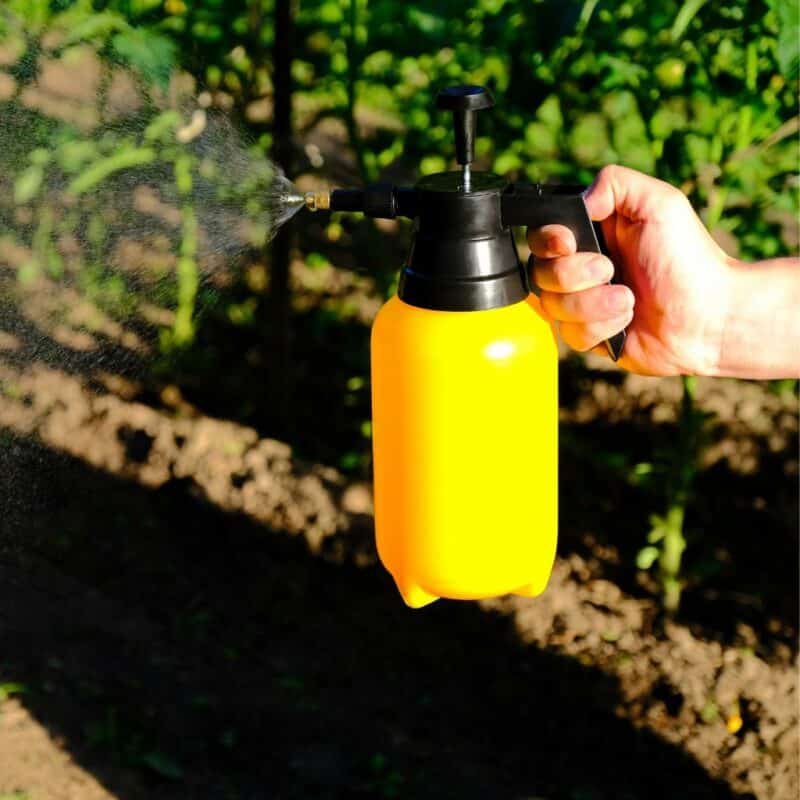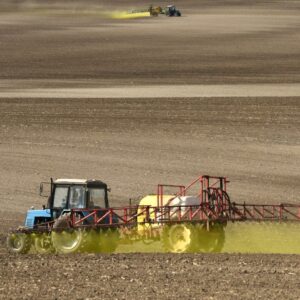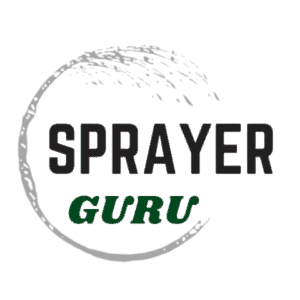“Sprayer” is a broad term that can refer to a lot of different types of liquid applicators. Sprayers are commonly used for herbicide and pesticide application in agriculture and lawn care but there are many other industries and applications that use sprayers. Although some sprayers can be used in different scenarios, many sprayers are designed to meet the specific needs of a certain job.
Different Sprayer Types
The basic components of different sprayer types are pretty similar but the subtle differences do have an impact on how effective a sprayer might be for a given task. It is important to find the right sprayer for your application. Here are several different scenarios and the specific sprayers that are best suited for them.
Garden Sprayers
A garden sprayer is a sprayer designed for small-scale gardening applications, such as applying pesticides, herbicides, or fertilizers on flowers, vegetables, and other plants. These are the main sprayers used for small to mid-sized gardens:
Handheld sprayer – A handheld sprayer is a very small sprayer. Usually, the capacity is only 1-2 liters. They are intended to be held in one hand and they are essentially a heavier-duty water pistol. You create pressure by pumping a handle and pulling a trigger to spray. These are perfect to use when you have a small area to spray and when you want to be very precise with where you apply your chemical.

Hand pump sprayer – Hand pump sprayers are larger hand-operated manual sprayers. They generally range from 1-2 gallons in capacity. They consist of the tank, pump assembly, hose, and spray wand. These sprayers are manually “pumped” up hence the name hand pump or “pump-up” sprayer. There are several ways to use these other than for applying fertilizers, herbicides, and fungicides on a lawn or garden.
Backpack sprayer – Backpack sprayers operate in the same basic manner as a hand pump sprayer but as the name suggests you carry it on your back. They vary in capacity but most hold about 4 gallons. When you want to spray a large lawn or garden a hand pump sprayer might require several refills, whereas a backpack sprayer will allow you to spray more area with each tankful.
Cart Sprayer – A cart sprayer is essentially a hand pump sprayer or backpack sprayer on wheels. It takes the load of the operator and can be moved around by hand very easily. Great for anyone who may struggle to lug around a backpack sprayer.
Lawn Sprayers
Hand sprayers and backpack sprayers can be used for lawn care as well. However, covering a large area by hand is inefficient. For larger yards, there are lawn sprayers that are pulled or mounted on a mower/tractor and they apply the liquid with a spray boom. Here are the different types:
Backpack sprayers – We already talked about backpack sprayers for gardens, you can also use your backpack sprayer for lawn care. They can be used to broadcast your spray solution over an entire lawn as you walk.
Push/pull cart sprayer – although backpack sprayers are pretty comfortable considering how heavy they are when full, a cart sprayer takes the load off of the user. Cart sprayers can be manual pump sprayers, like backpack sprayers or they can use a small battery-powered pump making them even more convenient to operate.
Pull-type boom sprayer – If you already have a riding lawnmower, you can use it to pull a small boom sprayer to treat your lawn quickly and evenly.
Golf Course Sprayers
Golf course sprayers are designed for the unique needs of golf courses. They are designed specifically to apply liquid treatments to the different types of turf found on a golf course: greens, fairways, and roughs. These sprayers must be mounted on vehicles like a golf cart or “Gator”, so they do not damage the course.
Golf Cart Sprayers – A golf cart sprayer is essentially a golf cart or similar vehicle that has been fully equipped as a sprayer specifically designed for the needs of golf course turf management. Similar to large production agricultural boom sprayers and golf course sprayers can be equipped with GPS mapping to ensure there’s no overlap and Wes automatic brake controllers that monitor flow rate ensure the appropriate droplet size and spray pattern is being applied over the desired area. This allows the operator to drive over different areas of the course (fairway, rough, etc.) and the rate can be adjusted as needed.
Golf Course Skids – This sprayer is designed to slide in a “gator” or utility golf course vehicle. They can be equipped with all the same precision features as the dedicated golf cart-type sprayer listed above.
Food Plot Sprayers
Food plot sprayers are used by hunters to maintain their food plots. Like other sprayers, they can apply herbicides, insecticides, and fertilizers to promote the growth of desirable forage crops for wildlife. These sprayers are typically made to be mounted on ATVs or UTVs for easy transport and maneuverability in rough terrain.
ATV sprayer – The sprayers made to fit on an ATV generally have a 15 to 25-gallon tank, a 12-volt electric pump, and a small boom with either a handful of flat fan nozzles or a pair of boomless nozzles. The controls are usually simple and very similar to a spot sprayer or 12-volt lawn sprayer.
UTV sprayer – ATV sprayers are generally pretty similar to an ATV sprayer except that they handle much larger capacity tanks, typically 50-100 gallons. It can also handle a wider spray boom to cover ground faster. You can use more complex control systems with multiple boom sections and pressure control.
Right of Way Sprayers
Right-of-way sprayers are used for maintaining roadsides, highway medians, and other public areas. They are typically mounted on trucks or trailers. They are designed to spray the roadside or ditch while the vehicle drives along the road.
Pickup truck-mounted sprayer – Unlike a conventional sprayer boom, roadside sprayers are equipped with a boomless “roadside” nozzle. This nozzle is mounted on the front right side of the bumper and covers the ditch, avoiding any spray on the road or vehicle.
Pasture Sprayers
Pasture sprayers are used for maintaining and treating large pastures and fields. They differ from row crop sprayers because they use special nozzles to cover a wide area without the use of a conventional spray boom. This helps to avoid trees, fences, and other obstacles.
3-point sprayer – Three-point sprayers can be used in a lot of different agricultural spray applications, but they are well suited to spray pastures because they are more maneuverable than pull-type boom sprayers.
ATV sprayer – Spraying a pasture can be very similar to spraying food plots. That being the case, an ATV sprayer is a good option for broadcast spray on smaller pastures or spot spraying large pastures. An Atv with a boomless spray nozzle setup is suitable for rough, uneven ground with obstacles like trees and fences.
UTV sprayer – a UTV sprayer is also conducive to rough terrain. As with an ATV sprayer, you can use a conventional boom or Boomless setup however A UTV sprayer offers the ability to haul a larger sprayer.
Pest Control Sprayers
Pest control sprayers are designed for applying insecticides and other pest control treatments to homes, businesses, lawns, and other areas. They are used for both indoor and outdoor applications and come in a variety of sizes and types.
Skid sprayer – whether it’s a van or truck, a skid sprayer is a sprayer made on a skid or base that can be carried around in different vehicles. For commercial pest control, these sprayers are typically equipped with high-pressure diaphragm or piston pumps. Instead of a spray boom, they have a heavy-duty industrial sprayer gun and a long reel of high-pressure chemical-resistant hose. This allows the sprayer to remain in the vehicle while the operating accesses the building or yard to apply the liquid as needed.
Trailer sprayer – A trailer sprayer is essentially the same as a skid sprayer but instead of mounted in a truck/van it is installed on a trailer and towed from site to sight.
Tree Sprayers
Tree sprayers are designed for applying treatments to tall trees. They are designed to spray high volumes at high pressure in order to reach the heights necessary to care for different types of trees.
Skid spray – the main difference between skid sprayers used by arborists and the types used by other pest control professionals is the size of the pump and the spray gun. In order to propel liquid up to the branches of tall trees you need a high-pressure pump with high volume and a special sprayer gun. This article discusses in detail all the components needed to spray trees.
Trailer-mounted spray rig – These sprayers operate like skid sprayers but are mounted in a trailer. This means there is potential to haul a sprayer with a larger tank or pump as space is less of a restriction.
Mist Sprayer – A mist blower is a unique sprayer designed to apply pesticides to orchards. They use a large fan to blow a mist of the pesticide solution in the trees as the sprayer drives down the rows of trees.

Agricultural Sprayers
Agricultural sprayers are designed for large-scale crop production and are typically used by farmers or professional applicators. They are used to spray all sorts of agrochemicals and fertilizers. They vary in size and can be self-propelled, mounted on, or pulled by a tractor.
3-point boom sprayer – When You think of a farm you know doubt think of a tractor. As nearly all farms use tractors to pull other equipment, a 3-point tractor-mounted sprayer is a logical tool that many farmers use.
Pull-type boom sprayer – The pull-type boom sprayer is a very common agricultural sprayer type. They are typically used to apply herbicides, pesticides, and fertilizers on crops. The sprayers used in agriculture are much larger than their smaller counterparts used in lawn care. They also have more features that are designed to help farmers be as efficient as possible, saving money, time, and chemical waste. Typical features include adjustable booms, electronic valves, automatic rate control, tank agitation, and more.

Self-propelled sprayer – A self-propelled sprayer is going to have the same basic features as a pull-type boom sprayer but they are not pulled by a tractor. Instead, they are essentially a tractor that has been designed for the sole purpose of spraying fields. They are the largest sprayer type with tanks in excess of 1000 gallons and booms that may span over 100 feet. You can see a full detailed breakdown of the types of sprayers used in agriculture in this article about farm sprayers.
Drone Sprayers – Drone sprayers are a relatively new sprayer in the Ag market. These unmanned aerial vehicles (UAV) are equipped with a tank, pump, and spray nozzles. They are limited in the amount of liquid they can carry but they are efficient and can be programmed to work in unison with other drones to quickly cover a field. They are especially useful for accessing wet fields when traditional sprayers cannot enter the field.
De-Ice/Anti-Ice Sprayers
De-ice sprayers are used for removing ice and snow from roads, runways, and other surfaces. Anti-ice sprayers are used to treat surfaces with the intent of preventing ice or snow from accumulating. They can be mounted on trucks or other pieces of equipment. They typically spray salt brine and other anti-icing solutions.
Pickup truck mounted sprayer – There are many ways to apply de/anti-ice liquids, but due to the fact that they are used only for part of the year, they are typically skid units that are mounted in the back of a pickup truck when needed. The tank, pump, spray bar, etc. are all contained in one unit that is easily forklifted in and out of the truck bed.
Dump truck mounted sprayer – The larger de-ice sprayers used on highways are also made on a skid that can be loaded and unloaded but they fit into dump trucks. They usually consist of a spray bar that can cover multiple traffic lanes with liquid with the truck driving in one lane.
Industrial Sprayers
Industrial sprayers are used for a wide range of applications in construction, and other industrial settings. They can be used for applying coatings, sealants, dust control products, and other liquids.
Dust control sprayer – Construction sites, racetracks, arenas, and many other facilities use sprayers to coat the surface with water or brine mixture to keep dust down. These sprayers differ from other types in that they are generally pretty simple, consisting of a tank, pump, and the appropriate plumbing to supply the spray bar. They use very large nozzles to apply high volumes of liquid. The need to precisely control the amount of liquid is not as crucial as in other sprayer types, such as agricultural sprayers.
Concrete/Driveway sealant sprayers – Depending on the job size, a hand pump sprayer, skid sprayer, or even a boom sprayer can be used to apply different driveway and concrete coatings or sealers. These sprayers are typically made with steel and brass components.
